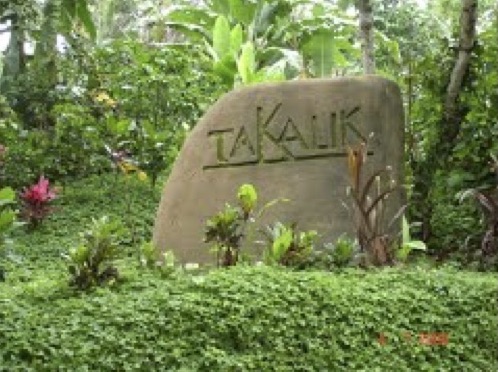
Earlier this year, Dr. Claudio Cioffi, director of the Center for Social Complexity, joined Dr. Marion Hatch de Popenoe and other scientists on-site at Takalik Abaj, an archaeologial site located in southwest Guatemala some 120 miles from Guatemala City. The goal of this project was to test Cioffi’s “Canonical Theory” in the case of social complexity origins in the South Maya region, an area known for its ancient and rich past. Takalik Abaj was a sizeable city with the principal architecture clustered into four main groups spread across nine terraces. While some of these were natural features, others were artificial constructions requiring an enormous investment in labor and materials, such as a sophisticated water drainage system and a wealth of sculptured monuments. The site flourished from the 9th century BC through to at least the 10th century AD, and was an important centre of commerce. The variety of architectural styles and iconography suggest that the site was occupied by different ethnic groups. Excavation began there in 1976.
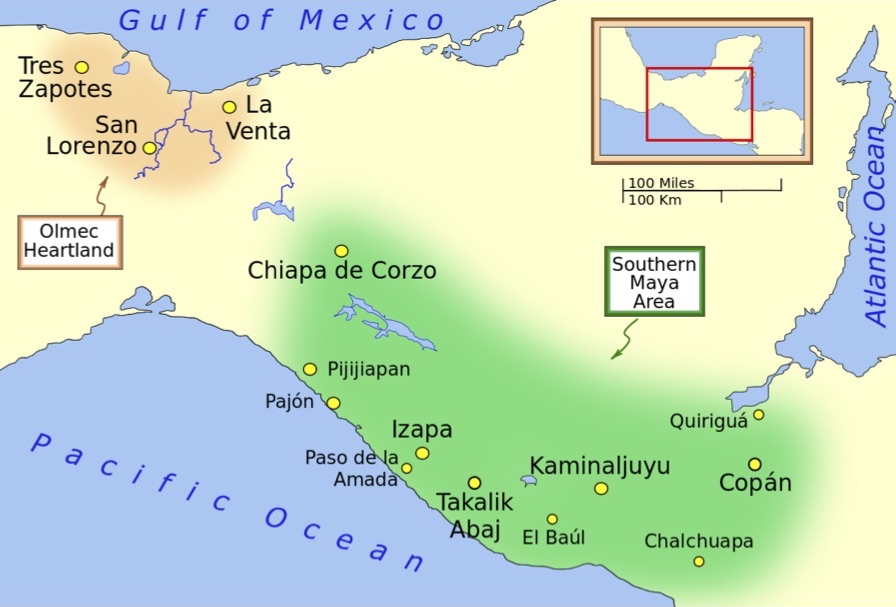
Known as “Place of the Standing Stones,” Takalik Abaj boasts a carefully laid out early Maya urban environment that includes at least 83 structures and more than 300 sculpted stone monuments. Although few tombs have been discovered thus far, other structures suggest a history of elite pleasures and rituals. One of Mesoamerica’s largest ball courts, measuring 75 by 16 feet, stretches across one of the site’s few flat areas. Nestled as it was in a mountain pass, the city had extensive trade networks that stretched as far afield as Mexico’s Veracruz state, El Salvador, and the Petén lowlands. Archaeologists believe Takalik Abaj was a cosmopolitan city and a crossroads of peoples and styles.
Takalik Abaj made headlines as recently as 2002 with the discovery of what is thought to be an intact royal burial tomb, perhaps that of the last Mayan ruler in the area. Ornaments of a quality to suggest royal life were found in the burial site, including two ornamental earplugs, a jade necklace and other jewelry, a small ceremonial jade mask that would have hung from the royal belt, and pottery offerings. The unlooted tomb did not reveal a skeleton but phosphorus tests have shown the evidence of decomposed human bones, and the soil shows traces of red cinnabar that was often used in burials. Miguel Orrego Corzo and National Geographic grantee Christa Schieber de Lavarreda headed up the team of archaeologists from the Guatemalan National Archaeological Project Takalik Abaj, under the auspices of the Ministry of Culture and Sports. For full article, click here.
Photo Gallery
Takalik Environs
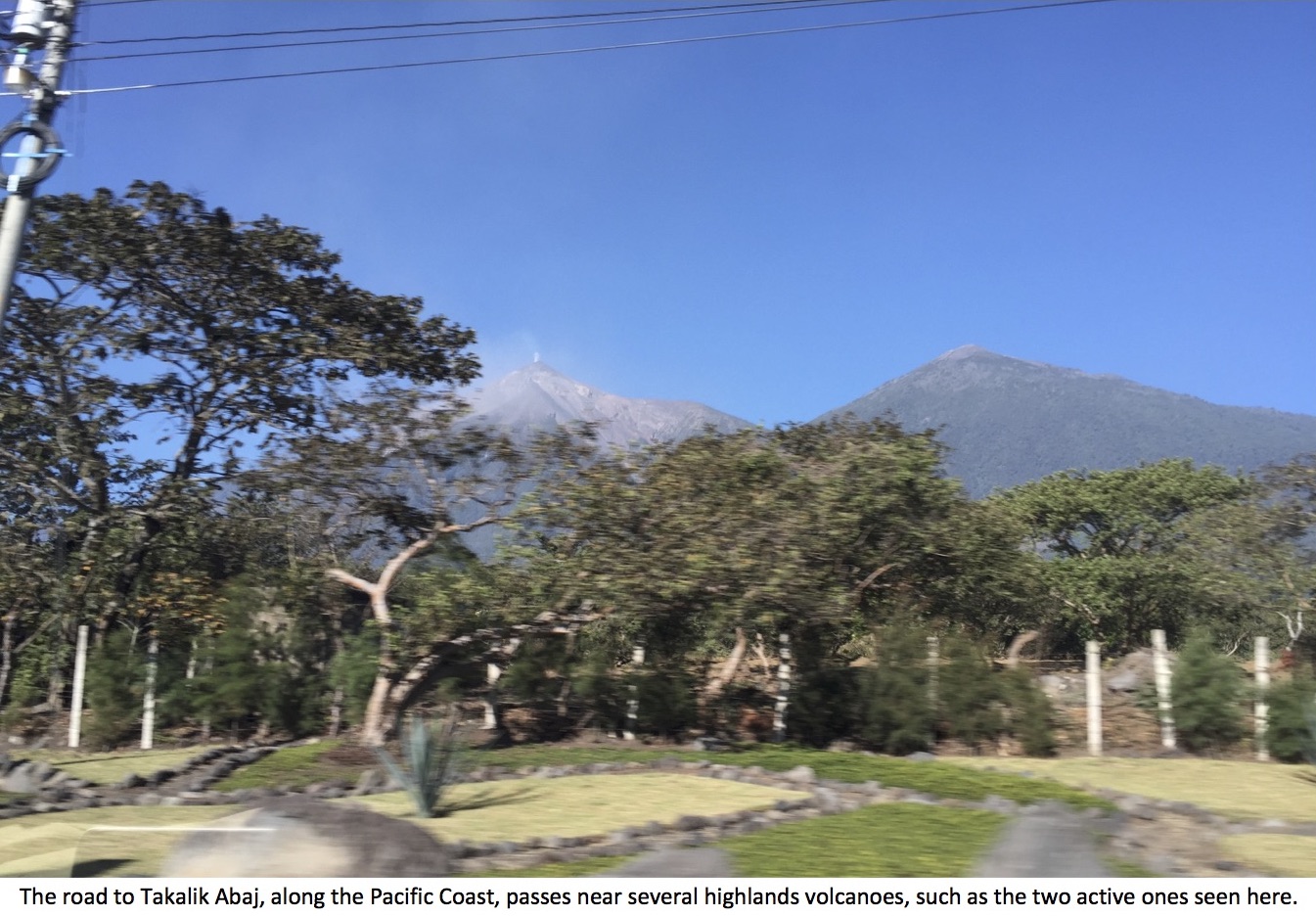
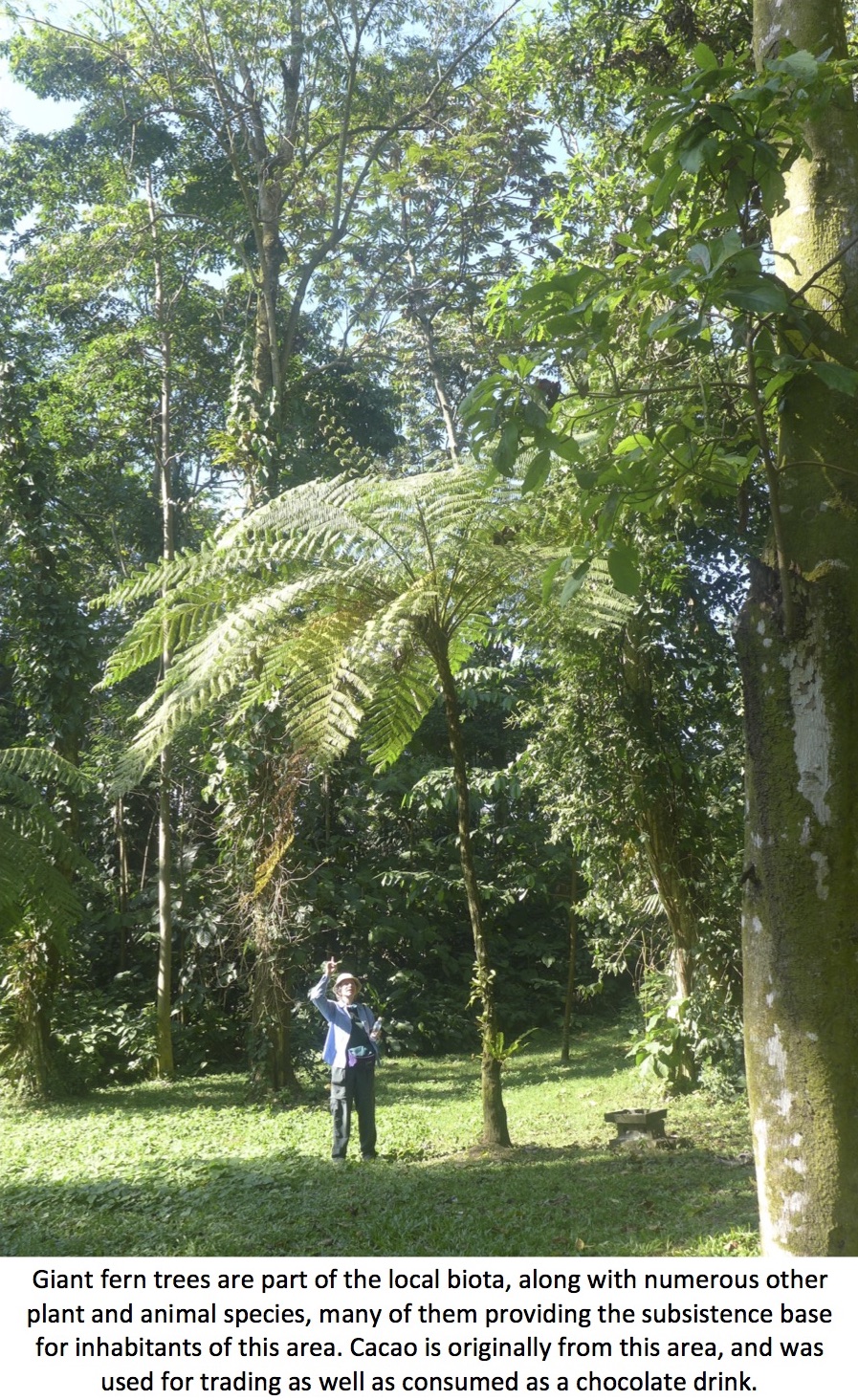
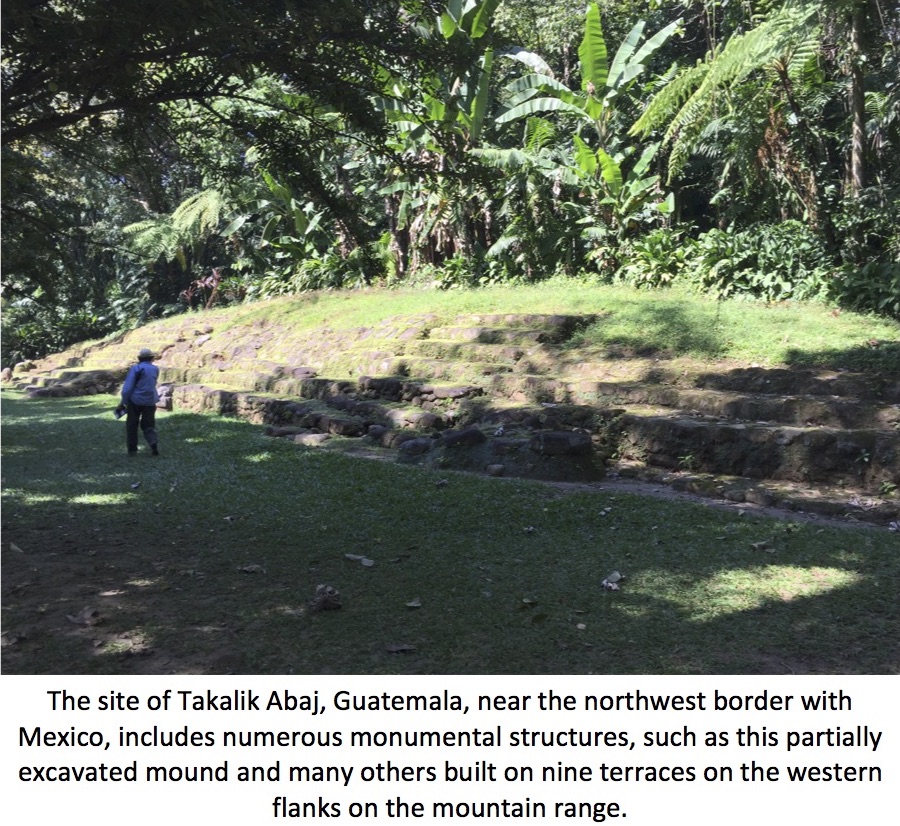
Stelae
Maya stelae (singular is stela) are monuments that were fashioned by the Maya civilization of ancient Mesoamerica. They consist of tall, sculpted stone shafts and are often associated with low circular stones referred to as altars, although their actual function is uncertain. Many stelae were sculpted in low relief, although plain monuments are found throughout the Maya region. The sculpting of these monuments spread throughout the Maya area during the Classic Period (250–900 AD), and these pairings of sculpted stelae and circular altars are considered a hallmark of Classic Maya civilization. The earliest dated stela to have been found in situ in the Maya lowlands was recovered from the great city of Tikal in Guatemala. During the Classic Period almost every Maya kingdom in the southern lowlands raised stelae in its ceremonial centre. Stelae became closely associated with the concept of divine kingship and declined at the same time as this institution. The production of stelae by the Maya had its origin around 400 BC and continued through to the end of the Classic Period, around 900, although some monuments were reused in the Postclassic (c. 900–1521). The major city of Calakmul in Mexico raised the greatest number of stelae known from any Maya city, at least 166, although they are very poorly preserved. (Source: Wikipedia)
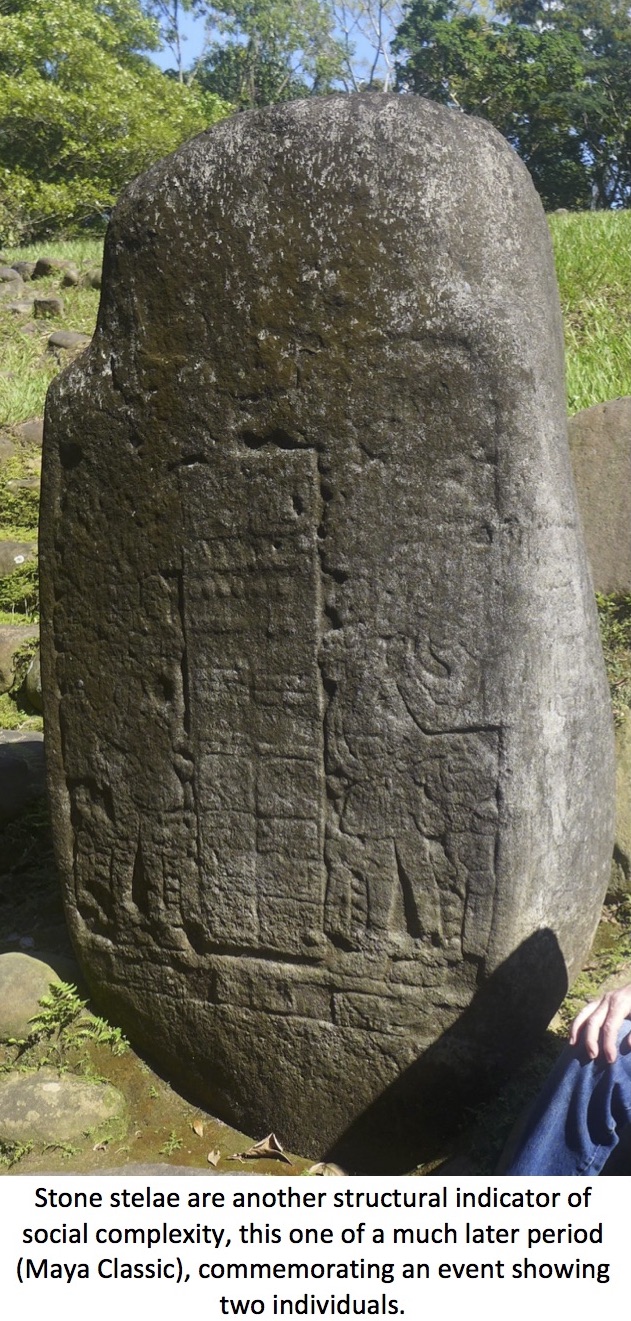
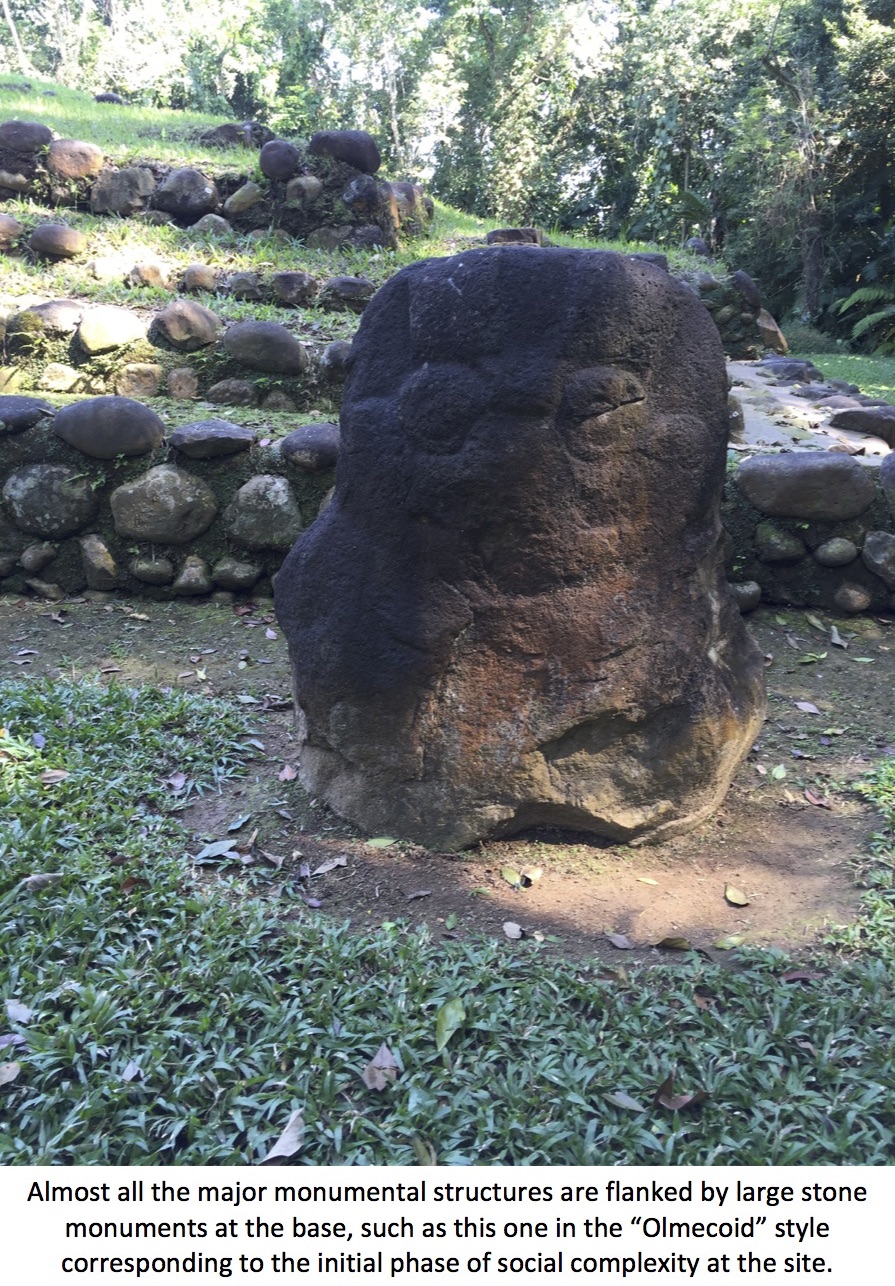
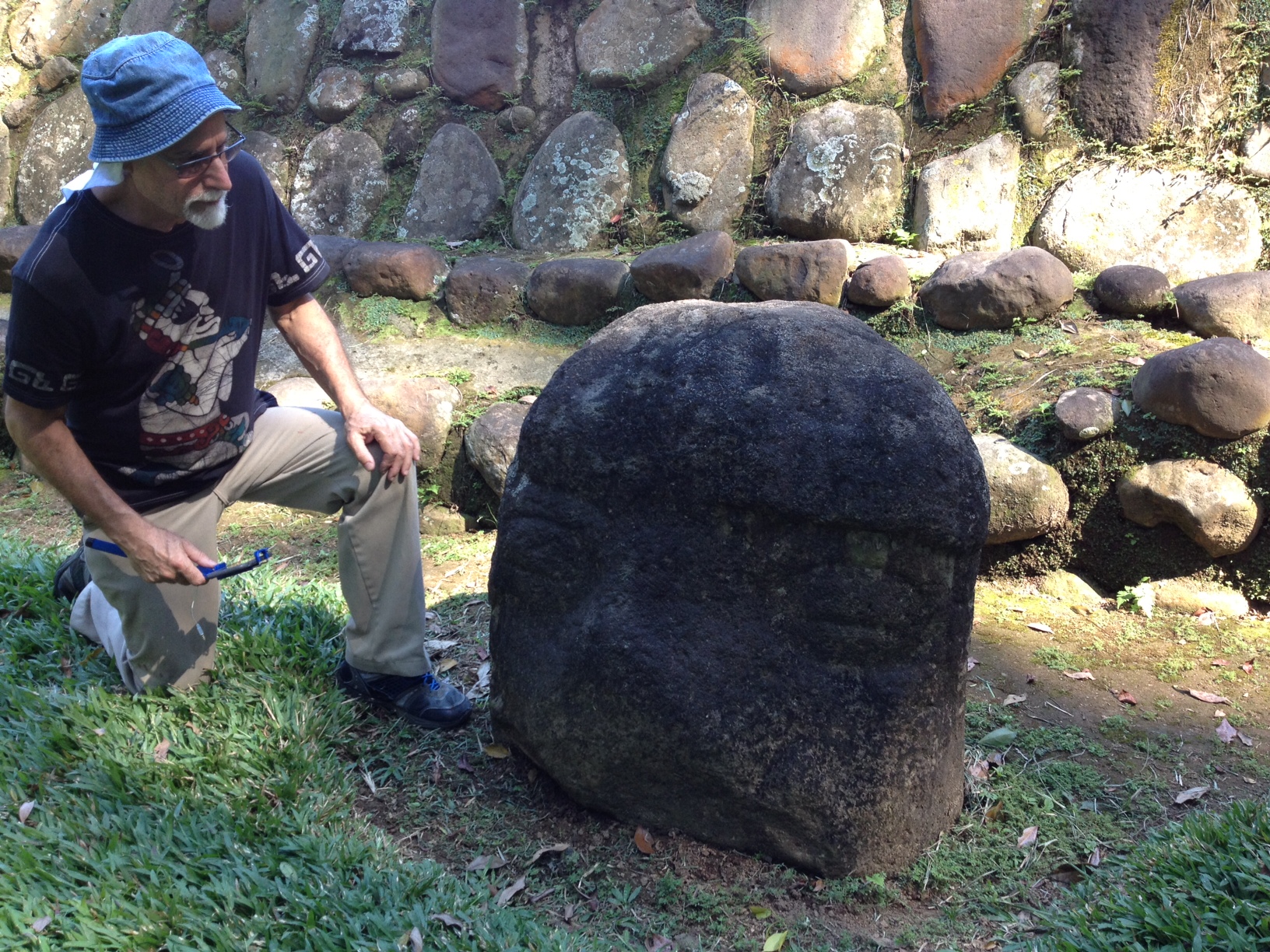
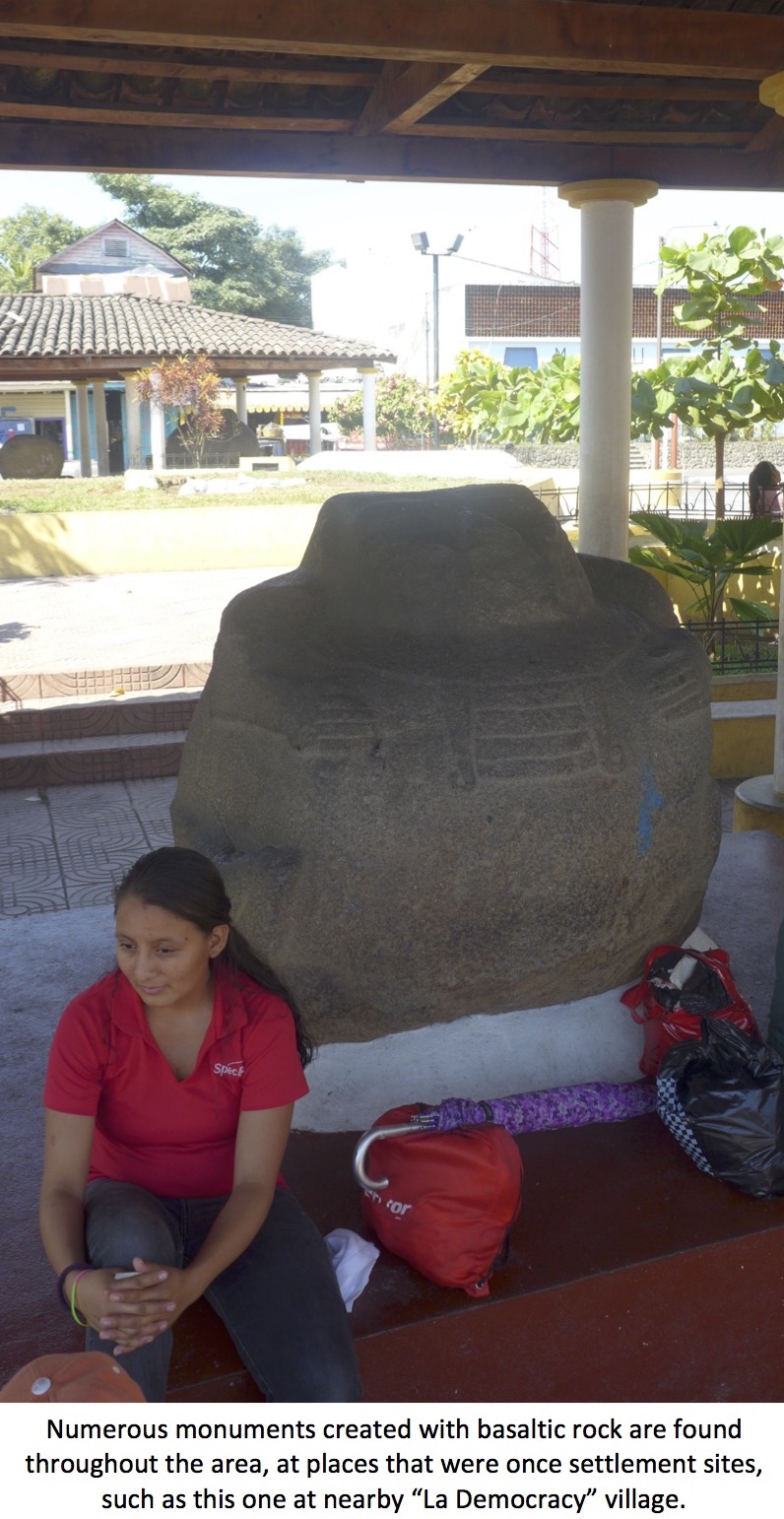
Ball Court
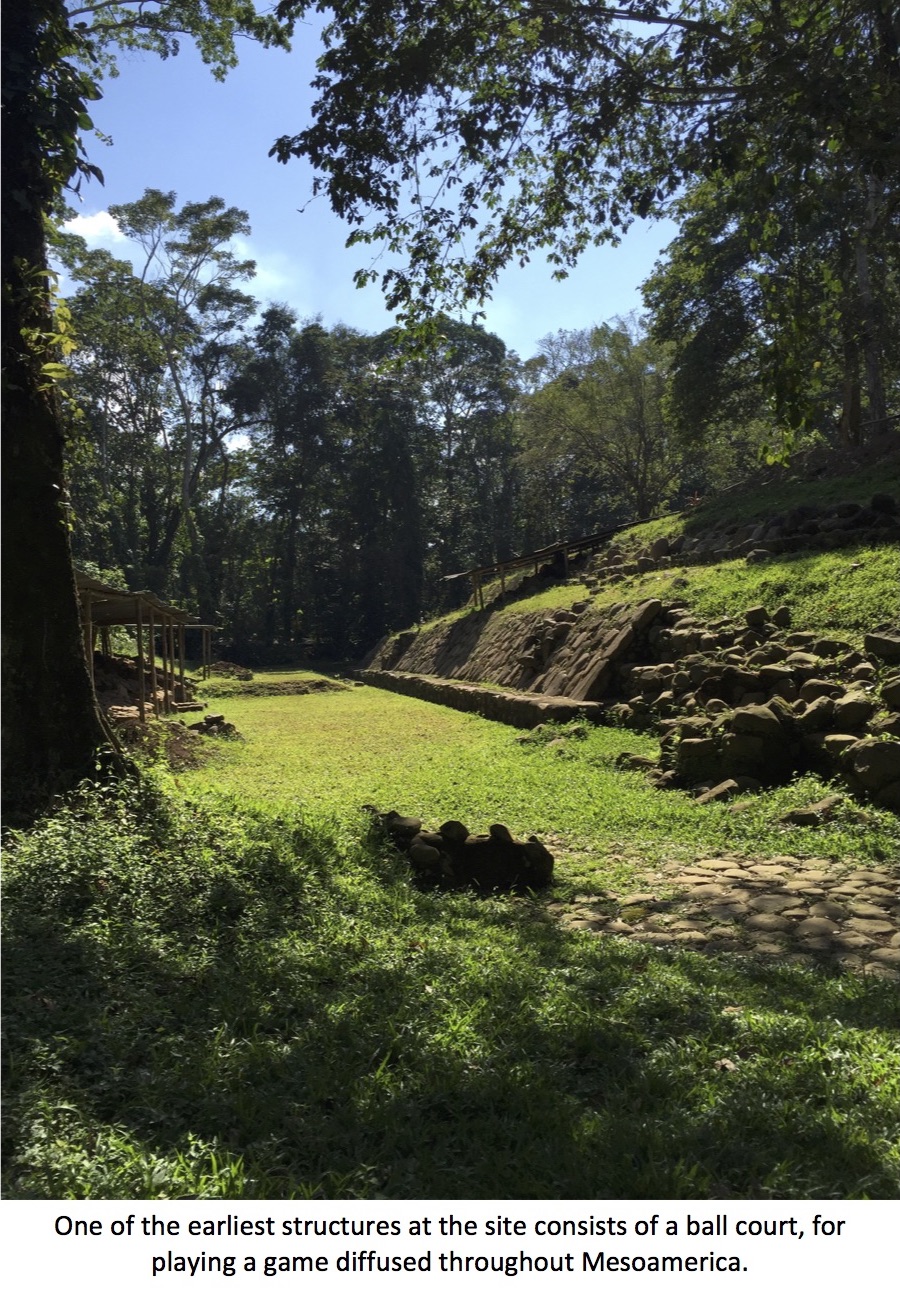
Royal Tomb
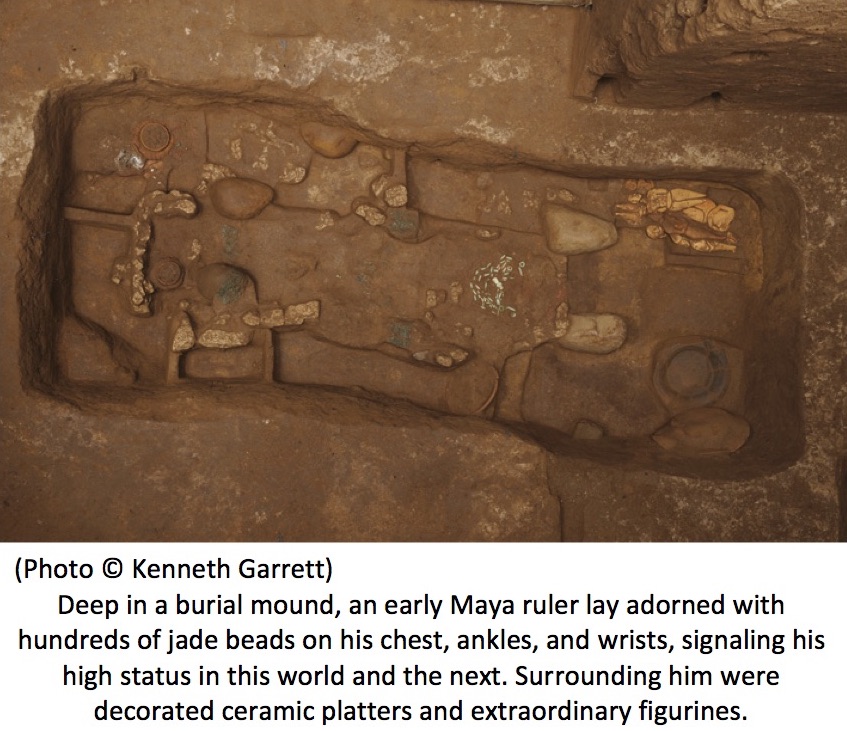
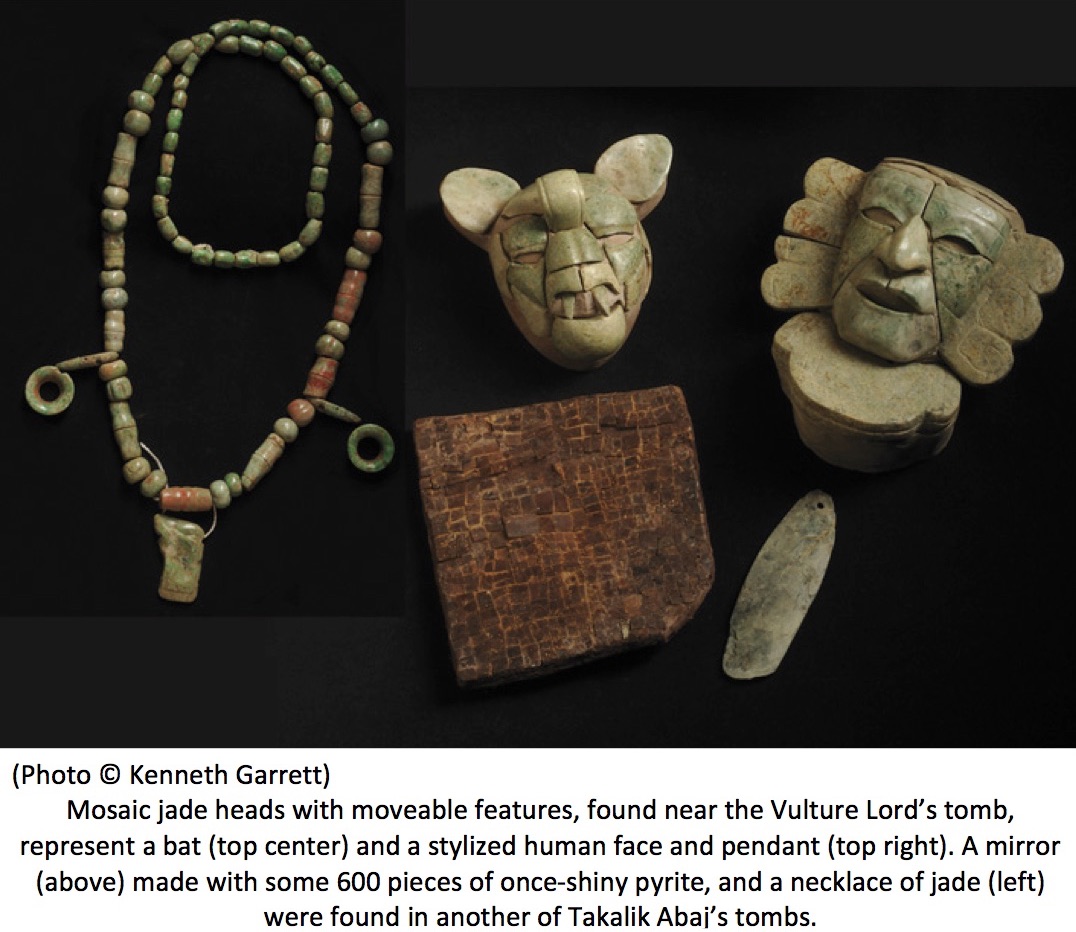
Water Drainage System
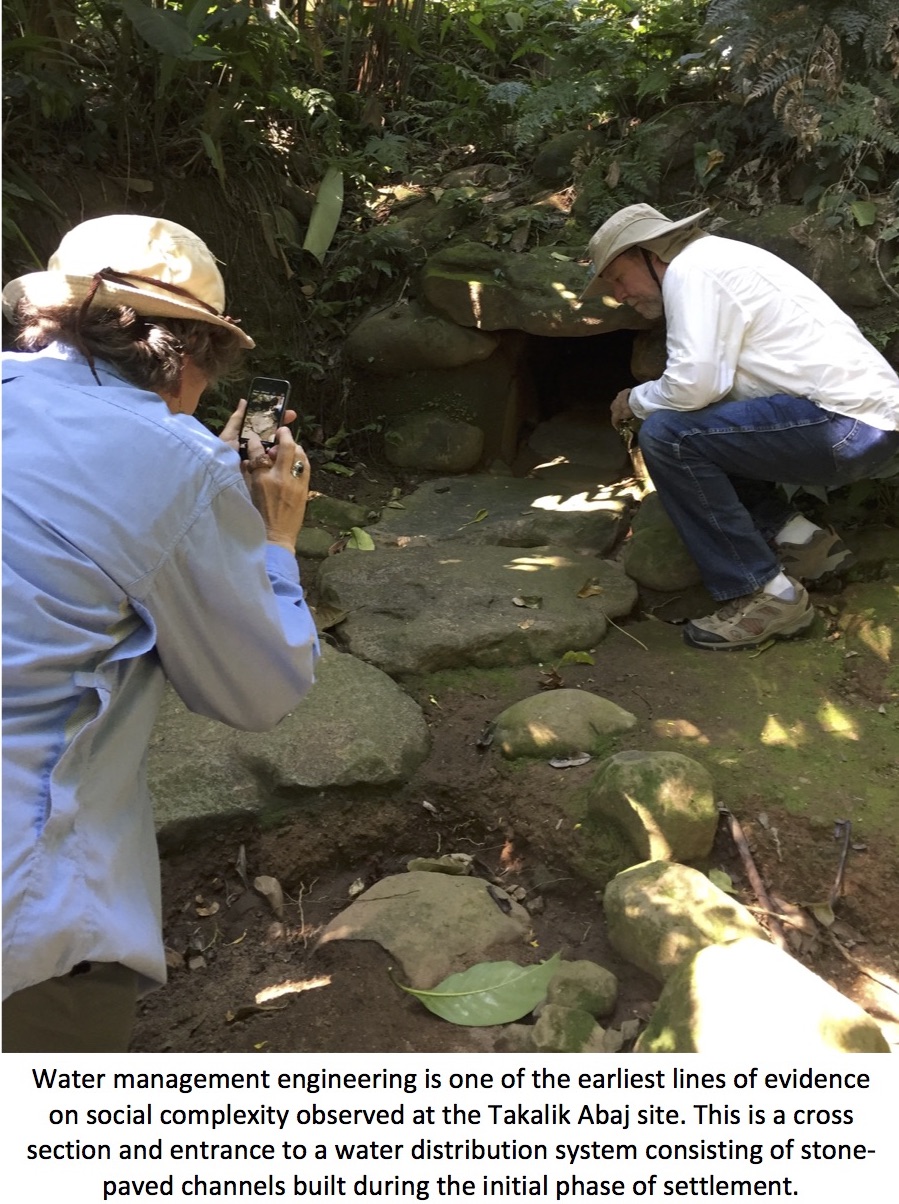
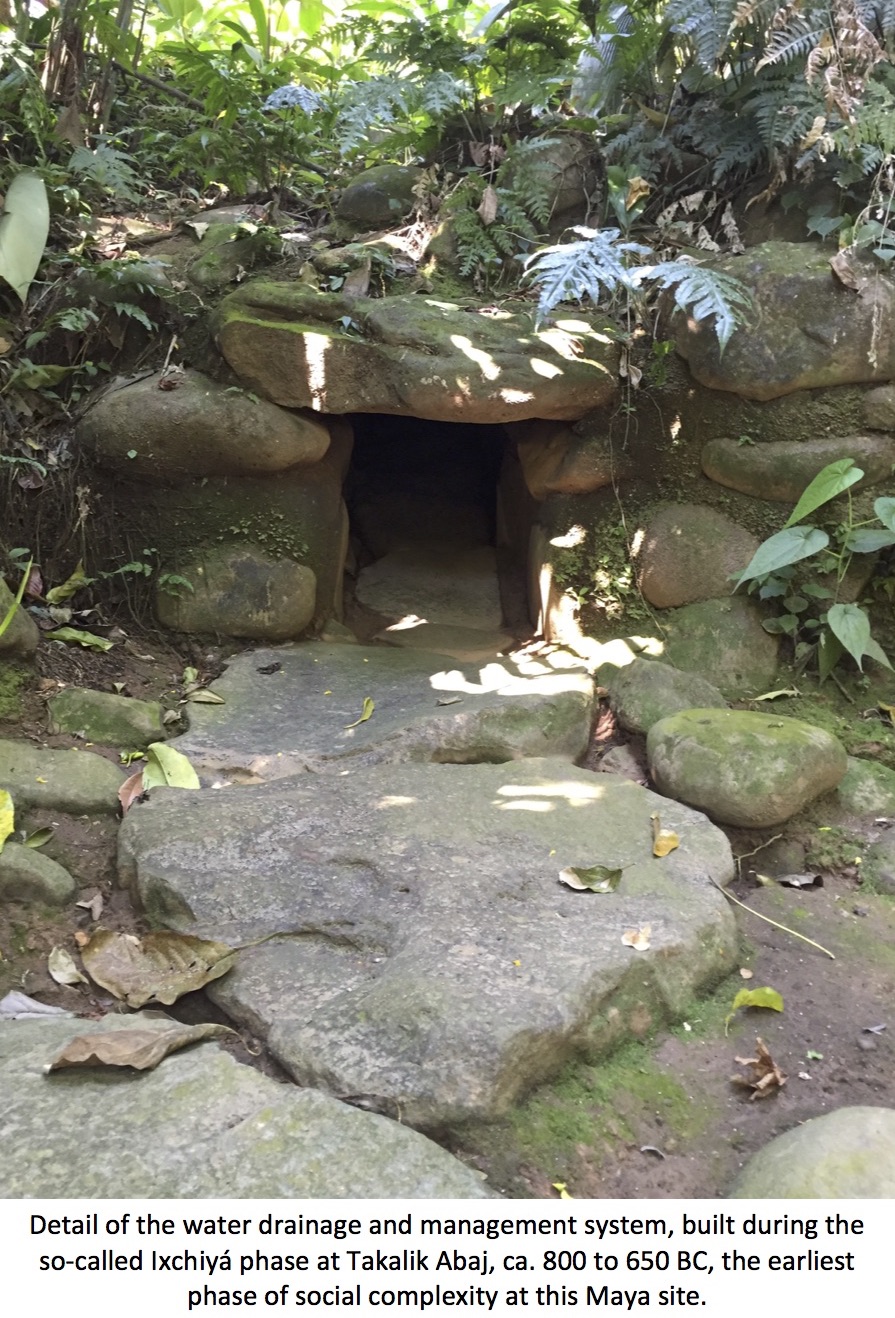
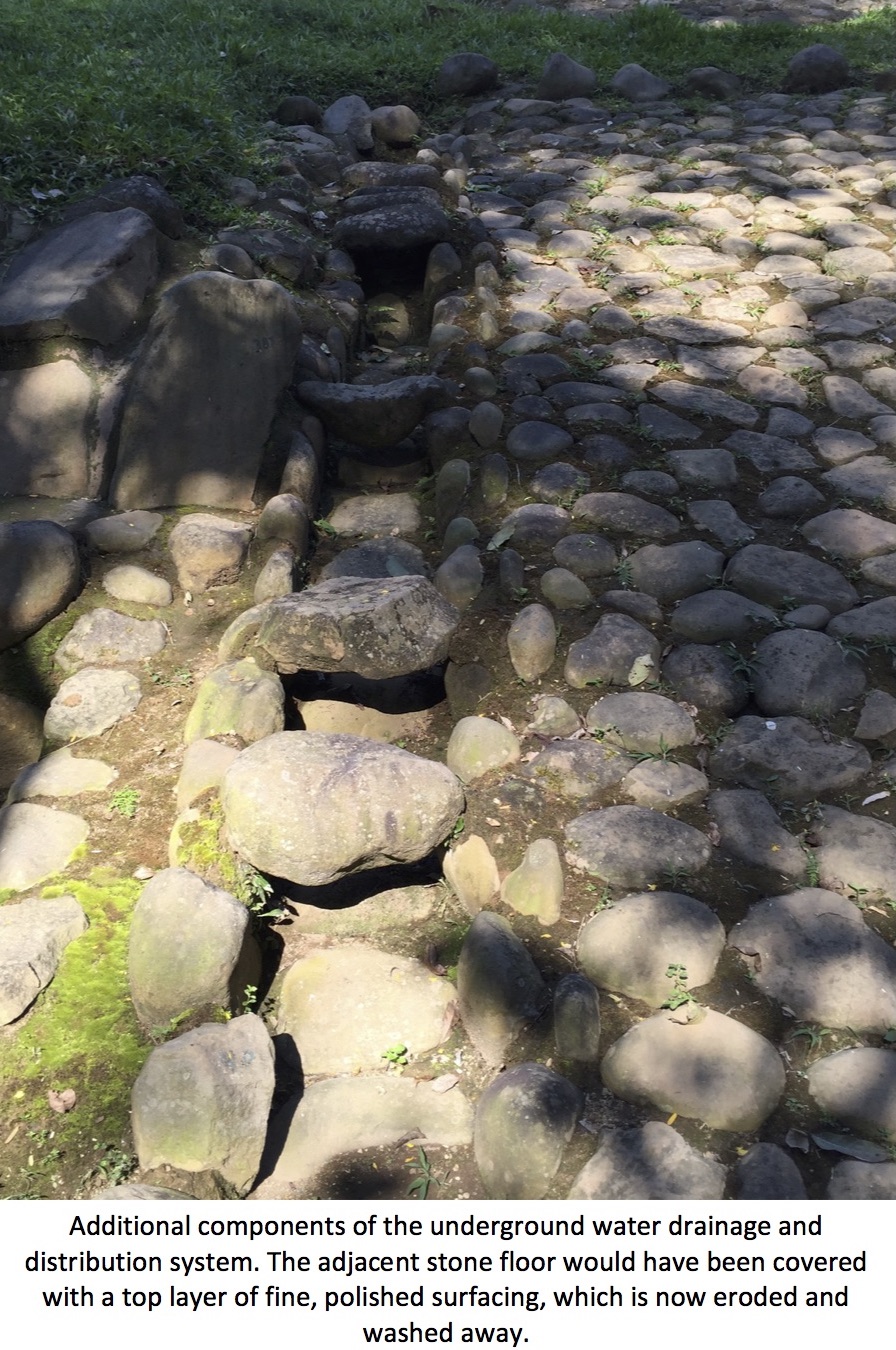
Links to Related Papers and Sites
1 Sprawling Maya network discovered under Guatemala jungle
2 Evolution of Maya Polities
in the Ancient Mesoamerican System
3 Unlooted Royal Tomb Unearthed from Earliest Maya Era
